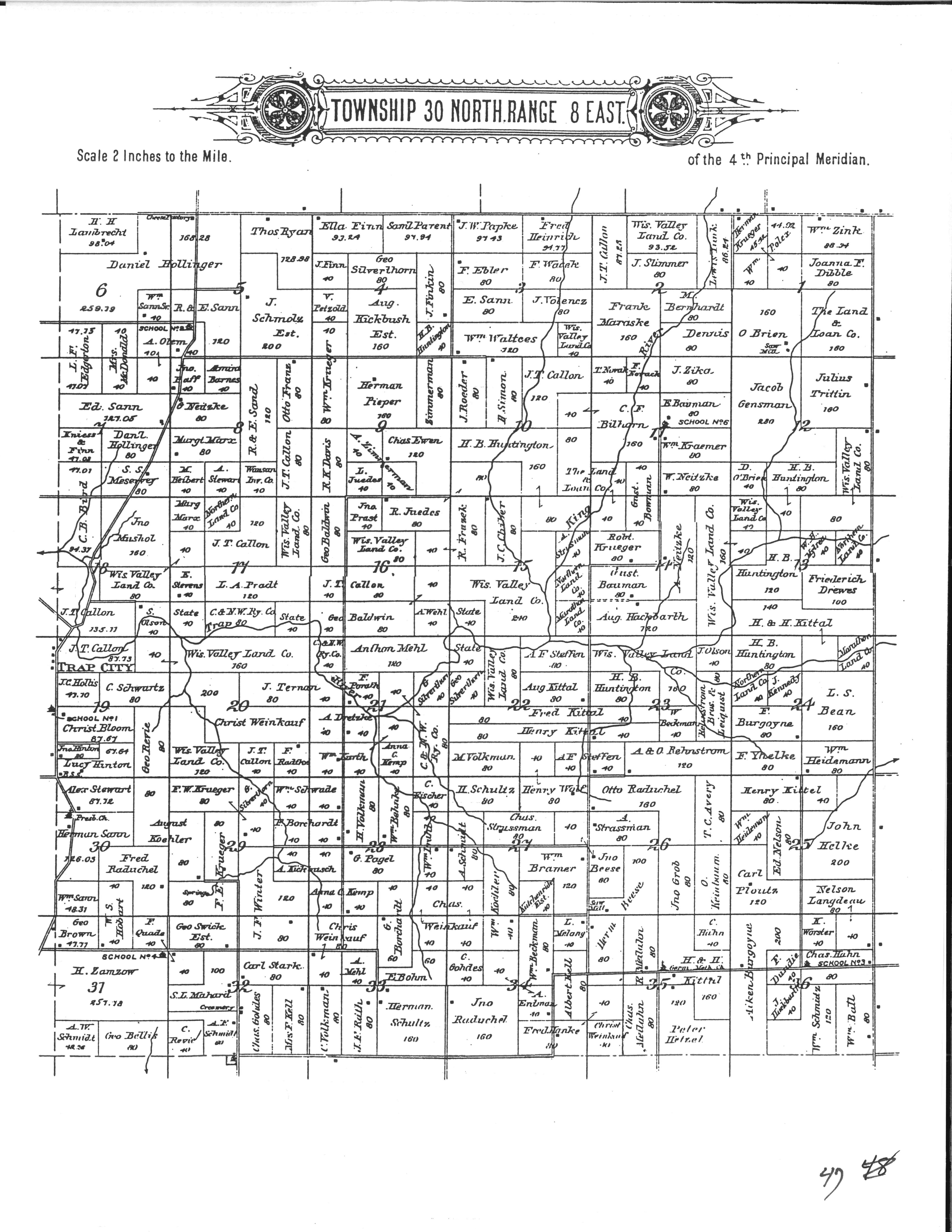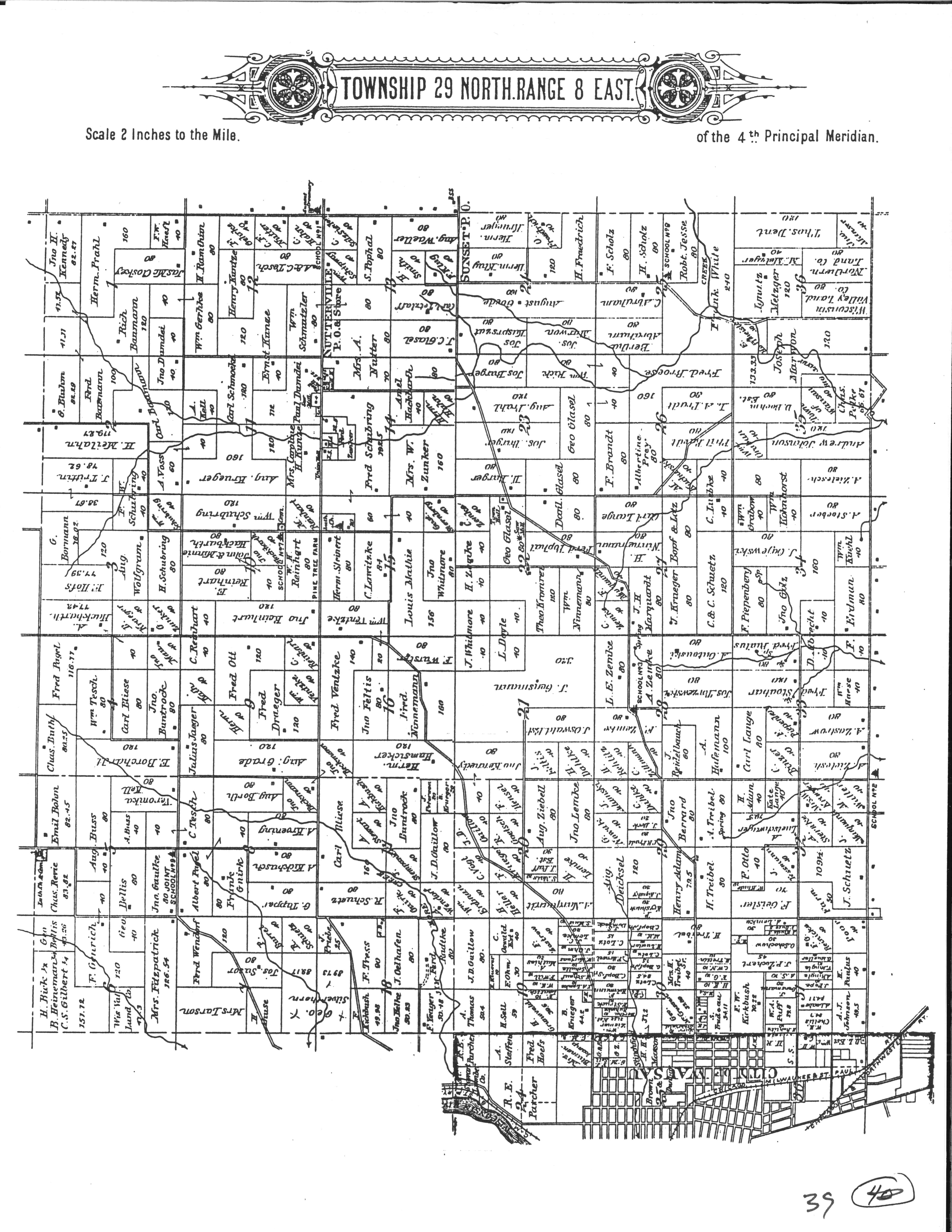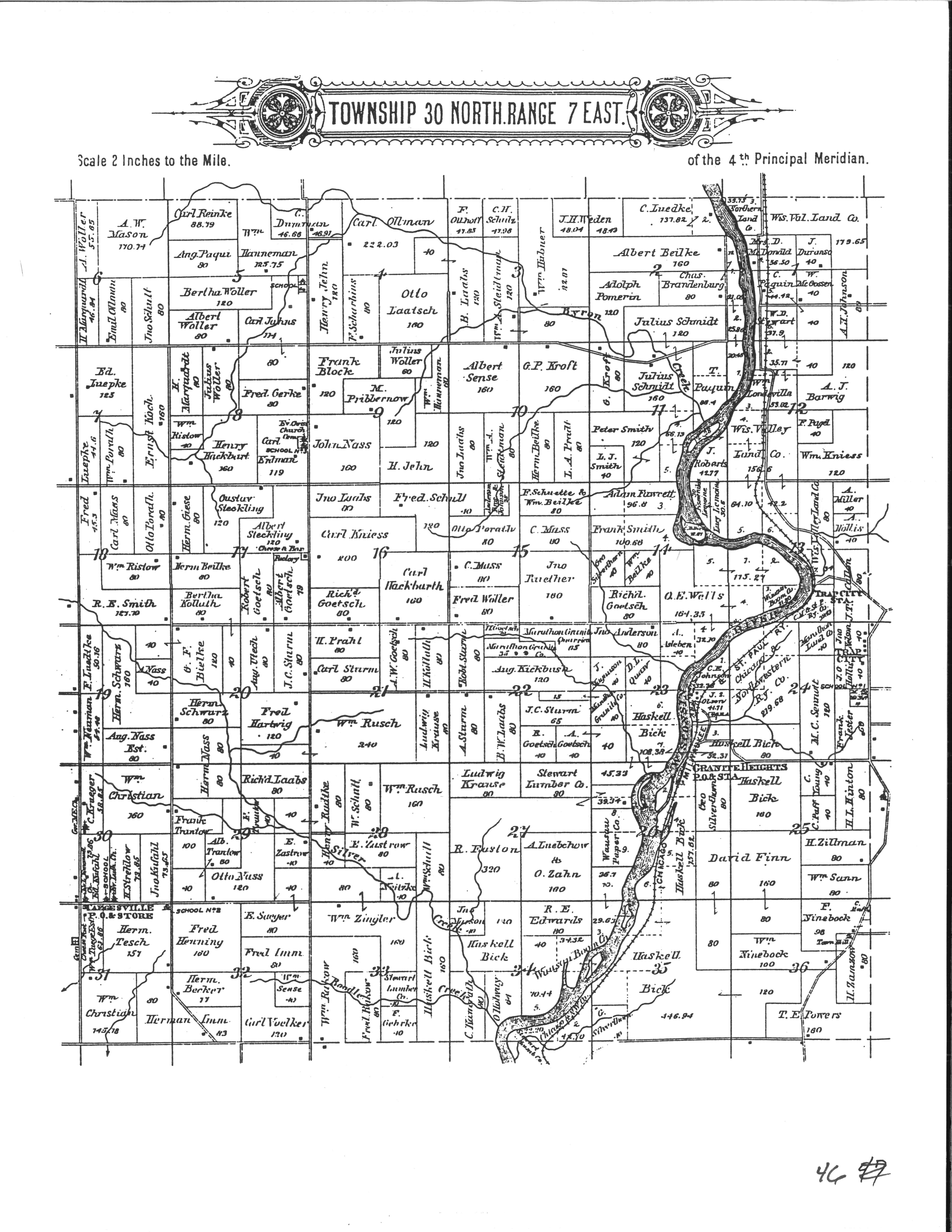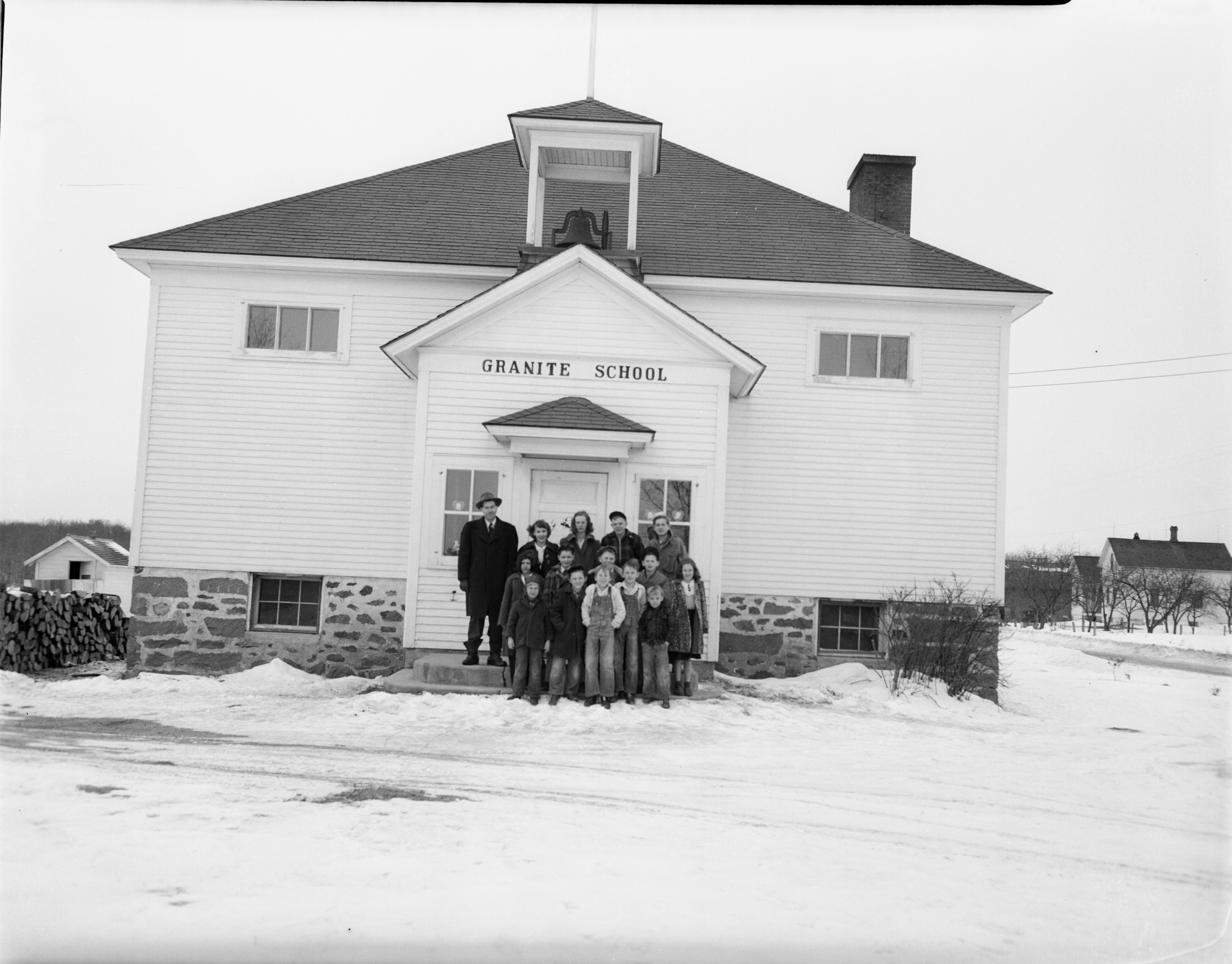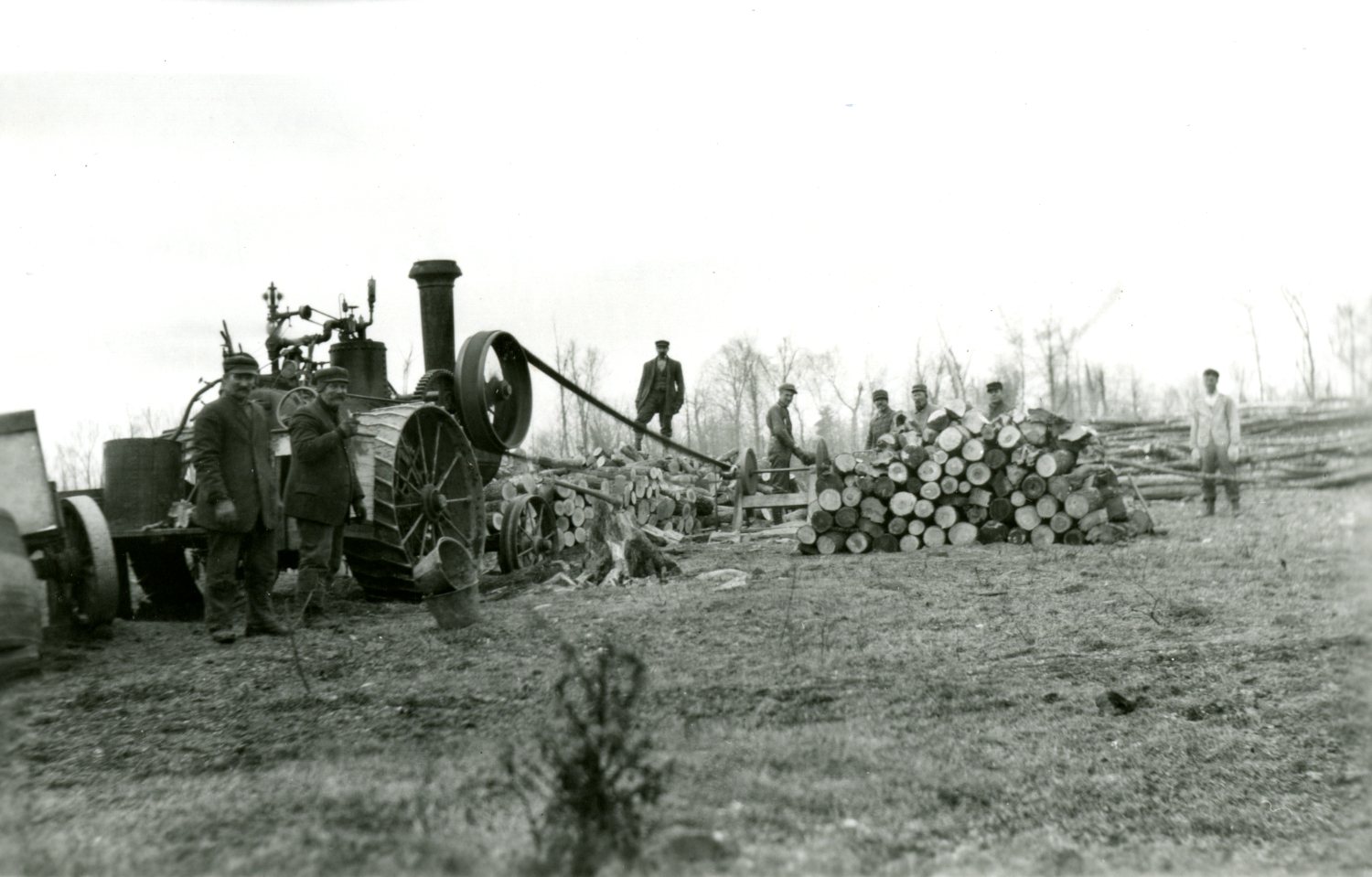Search our Places Database
Texas, Township of
Return To List of Locations | Back to Search
For more information on this location, please contact our research library.
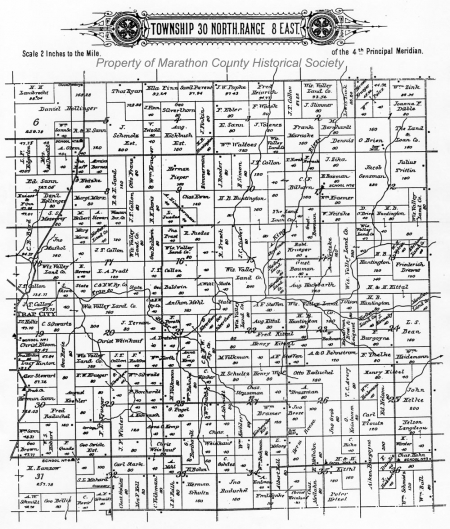
Author:
Mary Moltzan
Location:
T. 30 N. - R. 8 E. and T. 30 N. - R. 7 E., east of the Wis. River and T. 29 N. - R. 7 E., Sec. 1, 2, 3, 12, 13, east of the river
Formallized:
November 12, 1856
Background:
Population: 1905-989, 2000-1703 plus part of City of Wausau
The Town of Texas was established when Marathon County was first divided into townships. Originally, the Town of Texas was the largest in the county, thus it was named Texas. Its present borders were established on December 19, 1894.
The first people were native-born Americans. Later came the settlers involved in logging and sawmills. During and after the logging industry, settlers, many German immigrants, moved into the township to develop farms. The first farm settler (although mainly a logger) was Martin Hobart.
Fred DeVoe discovered that the central and eastern sections of this township contained a source of wealth in its granite deposits. See "Stories"
For information on the City of Wausau, see Wausau, City of
Biography:
No town records exist from 1856 - 1876. In 1876, William Schwart was elected town chairman.
Post Office Established:
May 15, 1872
First Postmaster:
M. D. Coursy, Trapp Post Office
About The Post Office:
The Trapp P.O. was established and discontinued several times until December 20, 1898 when it was discontinued for good. It was located in the NW 1/4Â of Section 19, T. 30 - R. 7.
Heights P.O., was established on October 21, 1889 and located in NE 1/4 of Sect. 26, T.30 N. - R. 7 E., with Thomas H. Thornton as postmaster. The post office's name was changed to Granite Heights on December 14, 1889. P.O. was discontinued on August 15, 1953 with service from Wausau.
Brokaw P.O.,  located in Sect. 2, T. 29 N.  - R. 7  E., is still in service. It was established on March 15, 1901 with Williams L. Edmonds as postmaster.Â
The Gohdes Post Office was established on August 25, 1894. The only postmaster was Carl Gohdes who was appointed on August 25, 1894. It was discontinued on March 26, 1900 or April 14, 1900. The location was Section 32, T. 30 N. - R. 8 E.
Churches:
Mary Poor Chapel - affiliation with the Presbyterian church but members of all denominations attended. It existed in the late 19th and early 20th Centuries and was located R. 8 E., Sect. 30.
German St. Peter's Evangelical Lutheran Church - organized c1870 with the first church building erected in 1882.
Free German Methodist Church - first church building, 1896. The name was changed to Mission Evangelical Church in 1897. Location R. 8 E., Sect. 35.
Schools:
1. District #4, Marshall Hill School or Granite Heights School, Section 18
2. Brokaw Public School, Section 18
3. District #2, Jefferson School, Section 5
4. District #3, Granite School, Section 3
5. District #5, Twin Falls School or Twin Oaks School, Section 10
6. District #6, Husting School, Section 11
7. District #7, Butternut Grove School, Section 33
8. District #1, Trap City, also spelled "Trappe" (See Trap City, Village of)
Business:
Holzem's Store
The Riverview Tavern and Park opened for business in about 1900 and was owned by Mr. and Mrs. "Manda" Thorn. It was located on the corner of Hwy. W and Golf Club Road.
A saloon and dance hall, first owned by Tom Powers, was located on Brokaw Corners.
The boarding house, built by the Marathon Granite Company in 1916, had a grocery store downstairs. In 1920 the company built the general merchandise store known as the Marathon Store.
Industry:
Quarries - The first quarry was opened and granite first used as an article of commerce by Adam Groth and Hugo Peters in 1884.
Sawmills and logging - The Trappe River Sawmill was built in the early 1850s.
Shingle mill - located near Trapp City
Mining
Creamery - Texas Creamery built about 1900
Cheese factories - When the dairy industry turned to cheese-making, the Texas Creamery closed. Later cheese-making equipment was installed and it began to operate again. Another cheese factory was the Texas and Pine River Cheese Company listed on the 1899 assessment roll. Four other cheese factories were built some time between 1915 and 1918. They were the Granite Factory, a factory located on the corner of W and WW, the Globe hill Cheese Factory and the Lone Pine Cheese Factory.
Farming:
During and after the logging industry, farms were developed. Farms grew, and more cattle were purchased. Farmers raised oats, wheat, barley, rye, and hay. When the crops were planted and harvested, farmers were busy clearing more land. As the farms grew, horses and machinery were needed.
Things began to change as more success was experienced in the dairy industry. The large grain fields were planted with corn, the crops were rotated, and silos were built. The herds of cattle were enlarged and improved. Guernsey and Holstein herds were most popular, although some farms had herds of Jersey and Brown Swiss.
Stories:
In 1897 Fred DeVoe, a quarryman and stone cutter, bought the interest of Cohen and Robertson. He went into business alone. When his business was well established, he busied himself finding necessary capital to build a profitable business on a large scale.
He found men of means in Wausau to join him in the development and extension of his work. They incorporated under the name of Marathon County Granite Company leaving the management to Mr. DeVoe as before. DeVoe managed the quarry on Whiskey Road for many profitable years. Later a daughter, Agnes, helped run the business until failing health caused her to retire.
Among the big, early contracts given the DeVoe company were the inside furnishing of the east wing of the Capital in Madison in 1913 for $14,000; the inside finishing of a big insurance and bank building in Salt Lake City; and a monument in memory of Haney, the builder of the Alaskan Railway, set up in Seattle.

